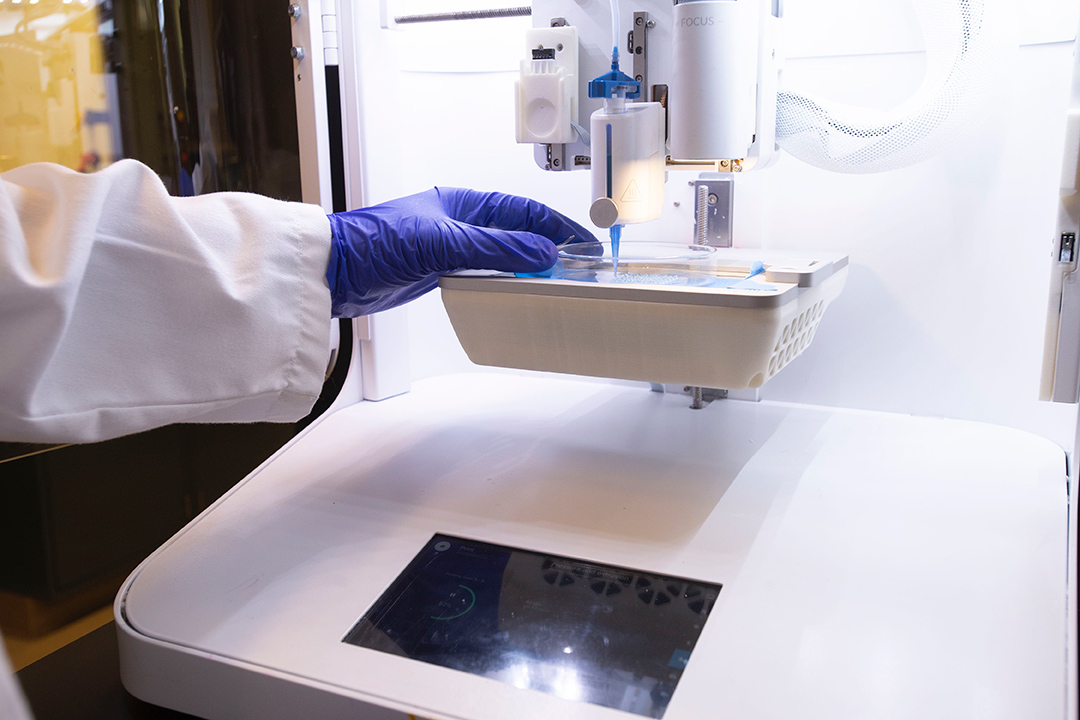Faculty-consultants provide a ‘teachable moment’ to students through project on improving COVID testing capacity
RIT’s industrial engineering faculty and alumni develop process improvement for local lab
A. Sue Weisler
RIT consultants assisted a regional lab facility with its process improvement planning to increase COVID test capacity. Shortly afterward, the consultants shared the process with industrial and systems engineering students during a graduate seminar.
When the incidence of the COVID-19 virus increased locally this winter, clinical test labs experienced larger than normal volumes of specimens—and higher expectations of rapid turnaround of results.
One of those test labs in the Rochester community needed to increase capacity by at least two-to-three times its normal volume to meet demand.
Industrial and systems engineering (ISE) alumni and former faculty members John Kaemmerlen, Jim Carroll, and Earl Chapman began consulting with the lab on Nov. 10 and developed a plan to meet the lab’s goals—then got to work.
Shortly after completing the initial phases of the project, the consultants presented how lean and continual improvement theories could be applied to health care to more than 40 ISE students, faculty, and alumni as part of the department’s virtual graduate seminar this past February. Their work made a difference for the community, and later for RIT students who saw how to connect theory learned in class for solving real-world problems.
“We came in as ‘outside eyes’ to the process. What these people were doing through the summer and fall of last year was remarkable. The lab staff wanted help fast, specifically to increase capacity. Before deciding what to do, we started to dig into the details,” said Kaemmerlen.
He and his partners divided tasks, such as conducting a time study of the operational work flow and how each technician interacted from intake to results and documentation.
“I think this project is the exact reiteration of the things I have learned in most classes,” said Meena Velamakanni, a seminar participant and graduate student from Hyderabad, India. “No matter what the field is, the steps are generally the same—planning, creating a model, creating simulations, finding outliers and gaps, training and testing datasets, and working on the feedback to create a better model.”
While watching lab staff, the consultants observed disproportionate fluctuations in inventory levels over time. This is one indicator that there was some inconsistency in sequencing of collection, intake, and preparation for processing. They put together a table top simulation, a physical model that represented the workstations with people and equipment, to view work flow through the system.
Pointing out process bottlenecks, the team recommended improvements as lab managers and technicians looked on to contribute to further analyze each action.
“Every mistake tells us something,” Kaemmerlen said. “The key in typical lean fashion is to address it right then and there and to keep going. We noted needed upgrades. We debriefed at each iteration.”
The collaboration with the clients was a way to make sure people were comfortable with the process and that it reflected reality.
“They saw and said yes, this is how things happen,” said Carroll. “For the first time they could see what was happening from a people point of view, from an equipment station point of view, from an inventory view— of things that were building up in front of stations. It had a bigger impact seeing it.”
The process discussion had an impact on the students who may be called on to provide similar recommendations once they are in the workplace. Aaron Kasinksi has applied several Lean methodologies while on co-op, adding that communication with customers was essential to the project’s success.
“This session reminded me that your outcome is only as good as your preparation and ability to communicate,” said Kasinski, a fourth-year BS/MS student from Binghamton, N.Y. “All contract work relies heavily on communication. The contractor is simply the expert in their field, while the clients are the subject matter experts specific to the application. Combining expertise with knowledge of the field is when considerable value is created.”
Trevor Martin agreed. “The session with John (Kaemmerlen) helped demonstrate a practical application of Lean methodologies. One thing I was glad they mentioned was that you need to make sure to keep your deliverables digestible by the target audience.”
“Not everyone is familiar with process maps or value stream maps, and you need to be able to get your point across in a way that is easy for the customer to understand,” said Martin, a fourth-year BS/MS student from Scotia, N.Y. “Lean principles don't change, the projects just get bigger.”
About the consultants
John Kaemmerlen ’76, ’86 (industrial engineering) worked at Kodak for 31 years. He also taught in the industrial and systems engineering department for 17 years, before retiring this past year. Jim Carroll ’79, ’85 (industrial engineering, Master of Business Administration) worked at Kodak and later at Curvature. Earl Chapman has industrial history with Kodak and Thermo Fisher. He also served as a member of the ISE Industry Advisory Board for nine years and as a guest lecturer in the department.










